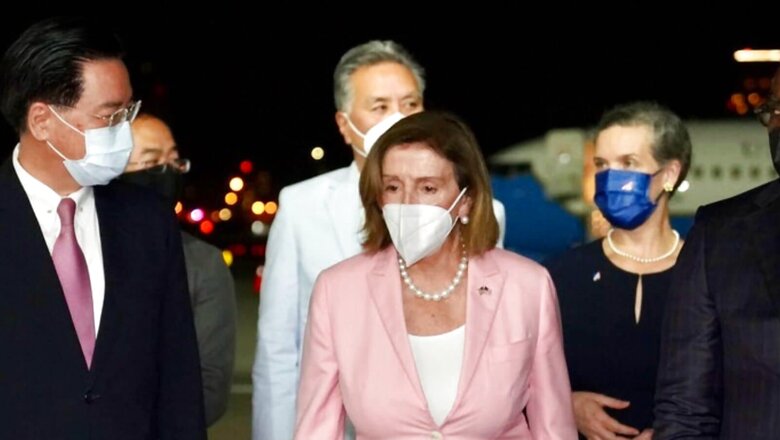
views
US House of Representatives Speaker Nancy Pelosi has successfully completed her visit to Taiwan, disregarding China’s vociferous threats.
China views Taiwan as a breakaway province that will one day unite with it. Beijing has not ruled out the possible use of force to reunify the self-ruled island with the mainland. It routinely protests any foreign dignitaries’ visits to Taiwan, insisting that all countries follow the One-China Policy.
History
In 1949, at the end of the Chinese civil war, Mao Zedong’s communist forces ousted Chiang Kai-shek’s Kuomintang (KMT)-led government of the Republic of China (ROC). The defeated ROC forces escaped to Taiwan where they established their government, while the victorious Communists began ruling the mainland as the People’s Republic of China (PRC).
The two sides have been governed separately since, though a shared cultural and linguistic heritage mostly endures — with Mandarin spoken as the official language in both places.
For over seven decades, Beijing has continued to view Taiwan as a Chinese province and vows to “unify” it with the mainland. Beijing’s stance is that there is only “one China” and that Taiwan is part of it, a view that is not held by all within the island nation.
Initially, many governments, including the United States recognised Taiwan as they shied away from Communist China.
However, diplomatic winds shifted and the US seeing a need to develop relations with China, recognised the People’s Republic of China (PRC) and derecognised the Republic of China (ROC) in 1979 under President Jimmy Carter. The US also moved its embassy to Beijing from Taipei.
However, the US Congress passed the Taiwan Relations Act in 1979 to protect the significant US security and commercial interest in Taiwan.
To this day, the US “One China” position stands: the United States recognises the People’s Republic of China as “the sole legal government” of China but only acknowledges the Chinese position that Taiwan is part of China.
Key distinction
The One-China Policy of the United States is not the same as the “One China” principle of the PRC, according to a primer published by the Brookings Institution.
“The One-China Policy contains more elements, such as the US interest in a peaceful process of cross-Strait dispute resolution, and its differing interpretation of Taiwan’s legal status as compared to Beijing’s interpretation,” it says.
It states that in the 1980s, the US shifted to using “policy” in place of “principle” in order to differentiate between the US approach and China’s version.
Where other countries stand
Only 15 countries today recognise the ROC. These include Belize, Guatemala, Haiti, Holy See, Honduras, Marshall Islands, Nauru, Nicaragua, Palau, Paraguay, St Lucia, St Kitts and Nevis, St Vincent and the Grenadines, Swaziland and Tuvalu.
Even international inter-governmental bodies like the United Nations and the World Trade Organization don’t officially recognise the ROC.
India’s stance, and how it’s changing
India, which was one of the first non-communist countries to recognise Zedong’s PRC in 1950, has also stuck by the One-China Policy. However, for New Delhi, the One-China Policy doesn’t just govern Taiwan but also Tibet. While India doesn’t recognise Taiwan or any Tibetan authority as independent of China, there has been a clamour for India to revisit its stance over China’s continuing aggression at Indian borders.
Over the years, meetings between leaders of India and China routinely reaffirmed the One-China Policy, However, India stopped doing so in 2010 after then Chinese Premier Wen Jiabao’s visit.
Beijing had conveyed to New Delhi that reiteration of the One-China Policy would enhance mutual trust between the two countries. But India declined to reaffirm the policy after Beijing issued “stapled visas” instead of normal visas to Jammu and Kashmir residents travelling to China.
When Narendra Modi became the Prime Minister in 2014, he invited Taiwanese Ambassador Chung-Kwang Tien and Lobsang Sangay, the president of Central Tibetan Administration to his swearing-in ceremony.
Last year, MoS for external affairs V Muraleedharan clarified India’s position while replying to a question in the Rajya Sabha. He said “government of India’s policy on Taiwan is clear and consistent”. He stressed that the government facilitates and promotes interactions in areas of trade, investment and tourism, culture and education, and people-to-people exchanges.
He was asked whether the government plans to augment its bilateral, diplomatic, and economic relations with Taiwan to a strategic level.
India has one office in Taipei for diplomatic functions. The India-Taipei Association (ITA) and the Taipei Economic and Cultural Center in New Delhi were both established in 1995.
India’s relations with China strained after the Galwan clashes in 2020, and New Delhi picked Gourangalal Das – then joint secretary (Americas) in the Ministry of External Affairs – as the ambassador to Taipei.
In May 2020, the BJP’s Meenakshi Lekhi and Rahul Kaswan attended the swearing-in of Taiwan president Tsai Ing-wen through virtual mode.
While New Delhi is careful about not sending across a heavy political statement on Taiwan, in August 2020, India described former Taiwan President Lee Teng-hui as “Mr Democracy” on his death.
India established ITA during Lee’s rule in 1995, and the current Taiwanese President, Tsai Ing-wen, is considered his protégé.
(With agency inputs)
Read the Latest News and Breaking News here












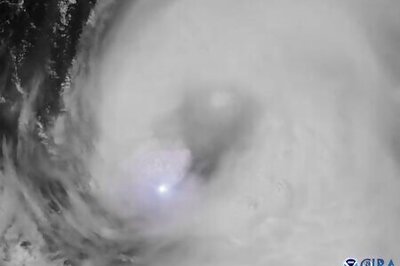
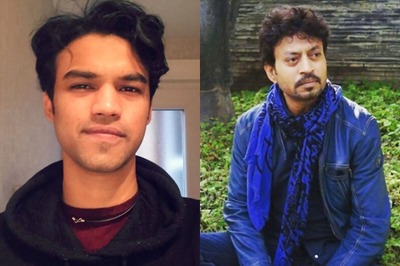
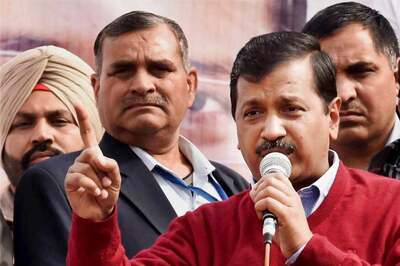


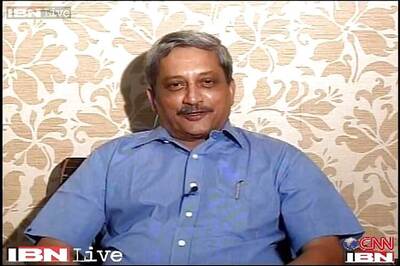

Comments
0 comment